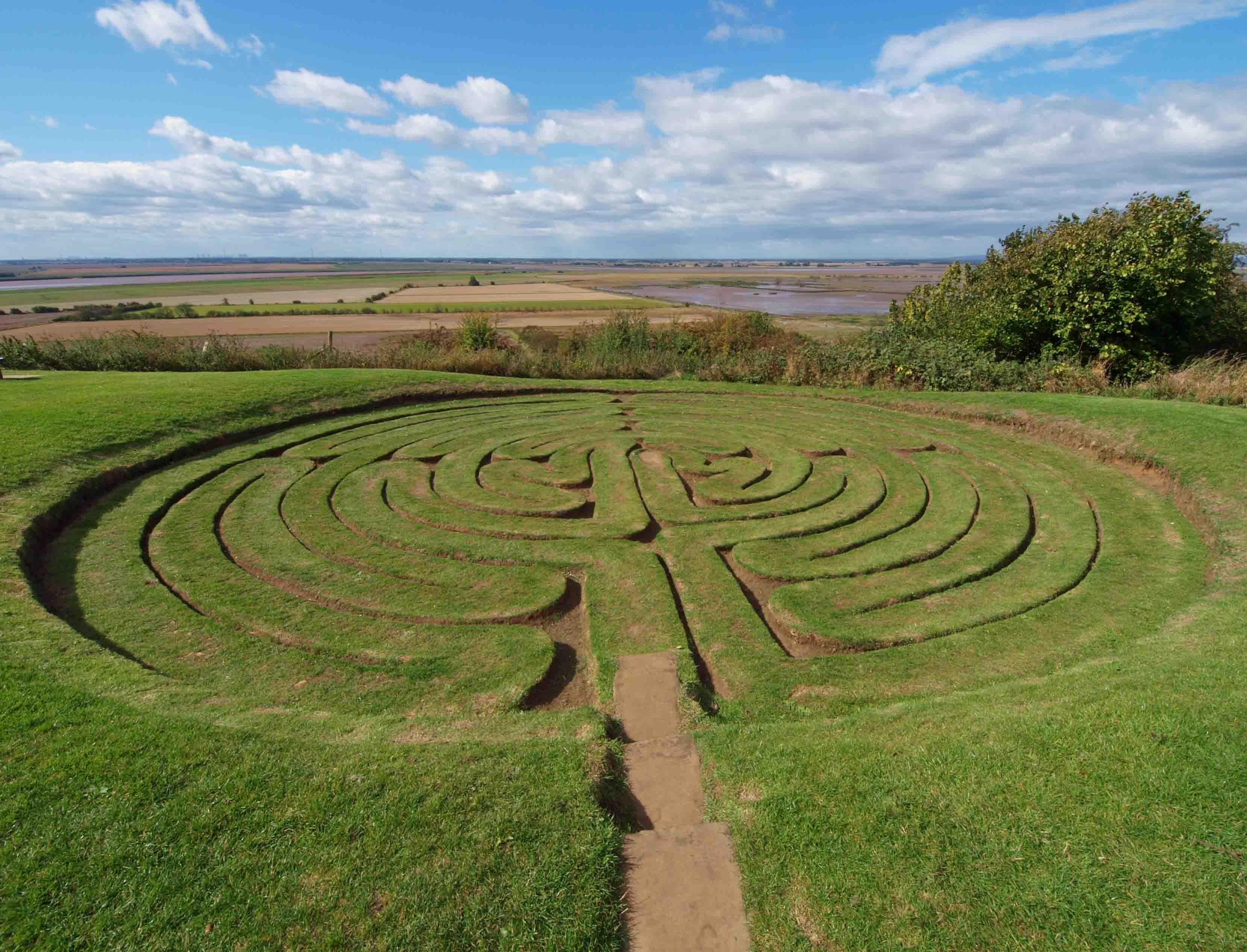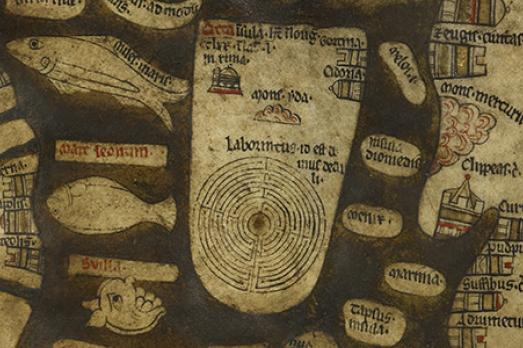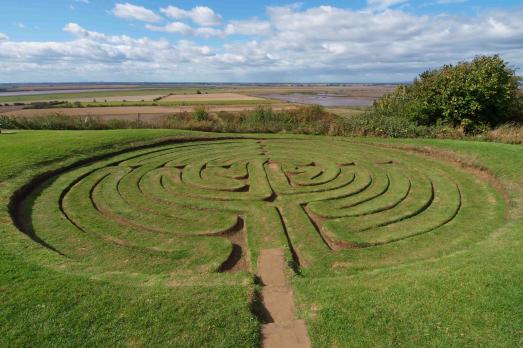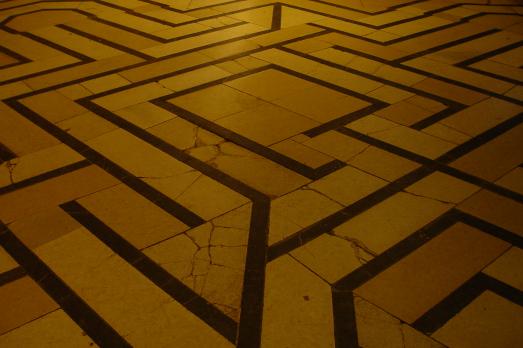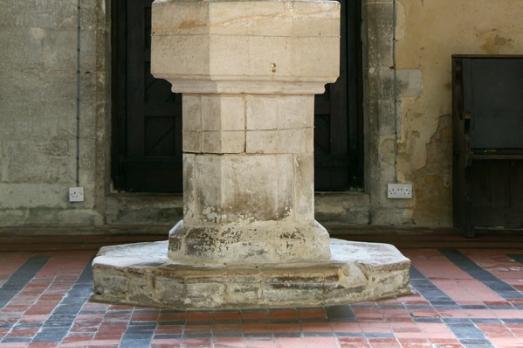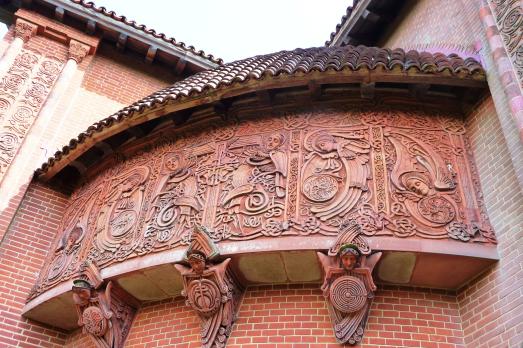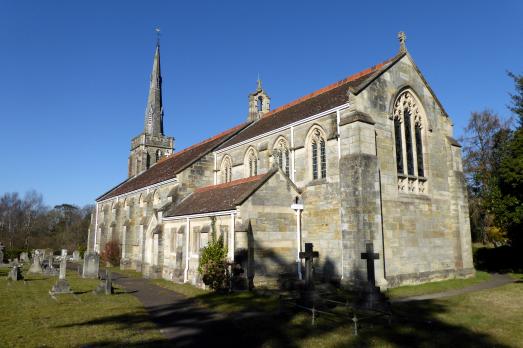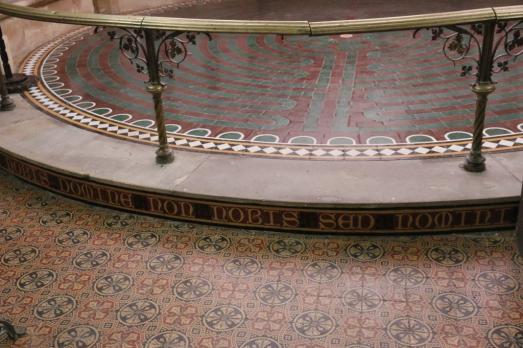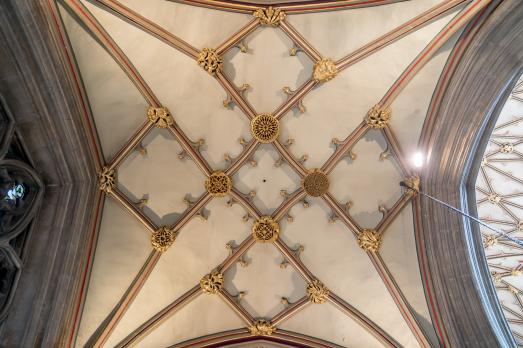
Gilded medieval boss
‘The fairest, goodliest, and most famous parish church in England’ : Queen Elizabeth I 1574. One of the many glories of St Mary, Redcliffe is the nave ceiling, which boasts 1200 beautifully carved and gilded bosses. One is a splendid carved and gilded labyrinth, one of only two remaining medieval labyrinths in the country.

